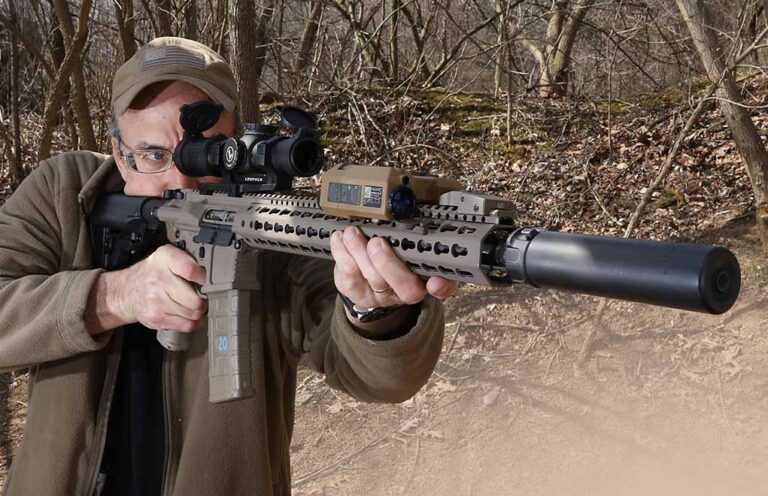
The author shares his top secrets for making your suppressor last a very long time.
You’re giddy as a schoolkid with a new …. well, let’s move on, shall we? You’ve just gotten your new suppressor, and you want to do this right, and you want to get the most out of it. Doing that involves five things: mounting, feeding, cleaning, performance and longevity.
Mounting is easy, right? Just screw it on, go to the range and have a blast.
Uh, no.
To do it properly, you need at the very least a proper wrench to fit the suppressor, and a fixture to hold the barrel. On an AR-15, that’s a “reaction rod,” a steel rod that holds the barrel by the locking lugs. On a bolt-action rifle, you want a set of barrel clamps and a vise. Clean the threads and then spin the suppressor on by hand. Use your alignment rod to check.
Oh, an alignment rod? That’s a straight steel rod that just slides down the bore. You slide it in and press the end flush to the endcap of the suppressor. If the suppressor is centered, you’re good, you can proceed. If it’s not, then you might be OK, and you might not be able to use that suppressor on that barrel.
There’s no “it looks bad, but it will be OK” here. A baffle strike can destroy your suppressor, so when in doubt, don’t. You follow a similar process with a QD mount: hand-tight the mount, mount the suppressor and check alignment.

If everything checks out by hand, take all the parts off. Degrease the threads. Use Rocksett to lock your muzzle device on and let it set. If your suppressor is a direct-thread and you have only the one rifle, then use blue or red Loctite to hold it in place and torque it on to the manufacture’s specs.
Oh, the top gun guy at your club sneers at Loctite, does he? He only uses Rocksett for everything? On a direct-thread installation, if you were never going to take it off (like for a police department), I’d agree. But you aren’t them. You might—someday—want to swap your suppressor to another rifle. Or you want to put a new suppressor on your AR, and this one comes with a QD setup. Yes, Loctite burns, but the ashes of it still bind the threads, and your suppressor won’t fall off.
You now have a properly installed suppressor. What to feed it?
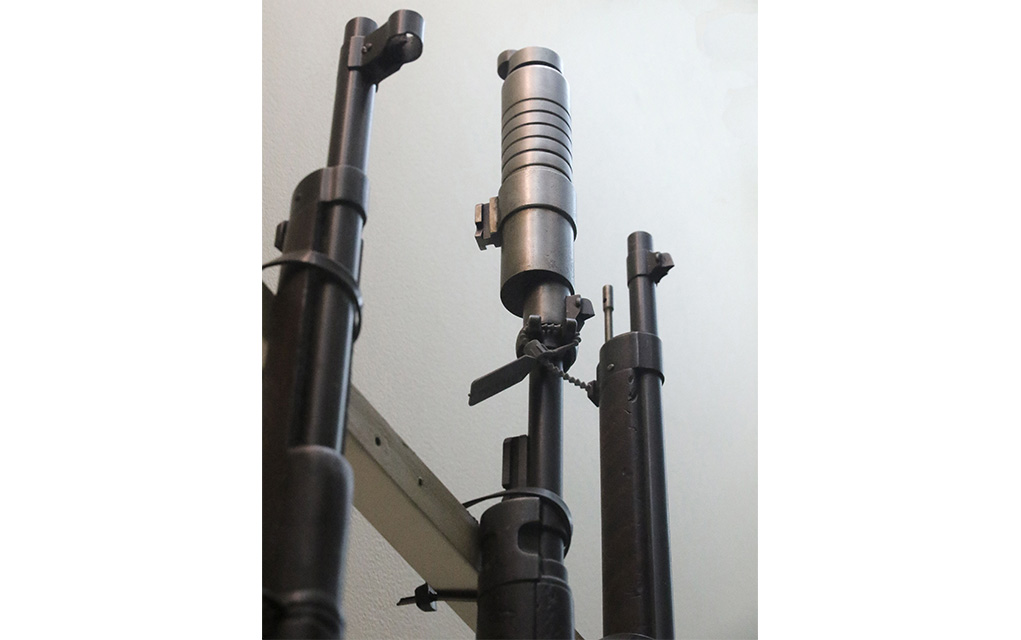

A Balanced Diet
In centerfire rifles, the answer is easy: jacketed bullets. In pistols, also jacketed. No lead, no coated, and I’m personally leery of plated, but some have found them to be no problem. Pistol suppressors gunk up with powder residue and lead (even jacketed bullets with an open base, lead some) and must be cleaned, and using lead or coated bullets just accelerates that to an enormous degree. When it comes to rimfires, there’s no getting around using lead bullets, so you’ll be cleaning often—don’t shirk this or you might not get your suppressor apart.
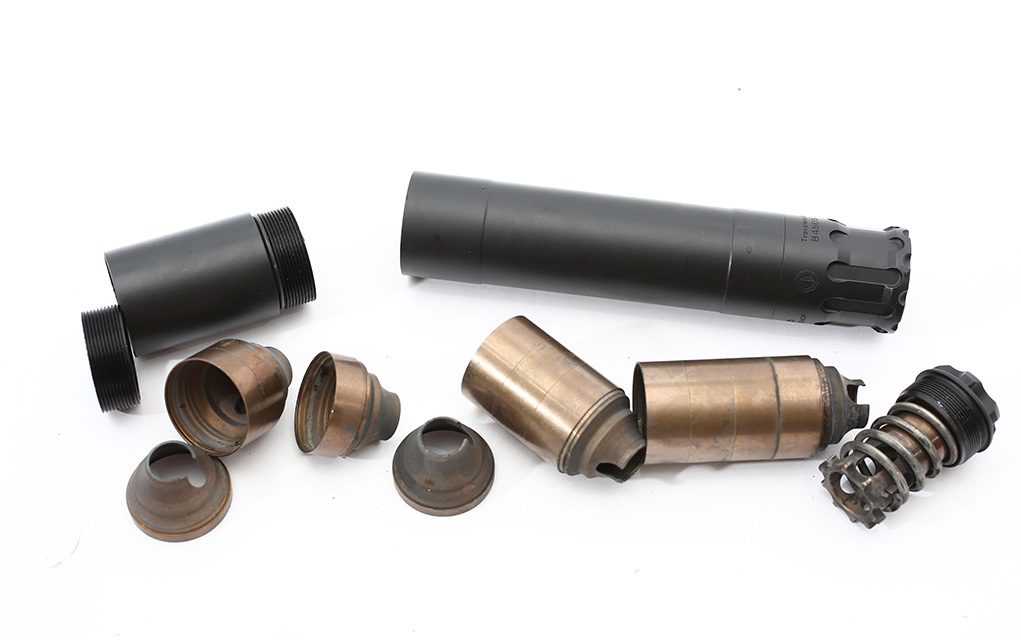

As far as ammo goes, you’ll find that some will spit more than others. Rifles tend to be uniform, if a suppressor spits crap back, it will with almost any load. But pistols are a different breed. Basically, the more powder the round uses, the more it spits.
I was doing a TV show once when we ran out of the vanilla-plain .45 ammo we’d been using with a suppressor. All that was left was the +P ammo. And, boy, did it spit. Every shot was like blipping the trigger on a sandblaster with the cabinet door open. If you want to have the best experience, pay attention to what loads or brands spit the most and avoid them, and the least and use more of them.
Rifle suppressors tend to improve accuracy, as they strip off muzzle gases that might otherwise cause turbulence for the bullet. It’s not a lot—and you need a good shooter and an accurate rifle to see it—but it does happen.
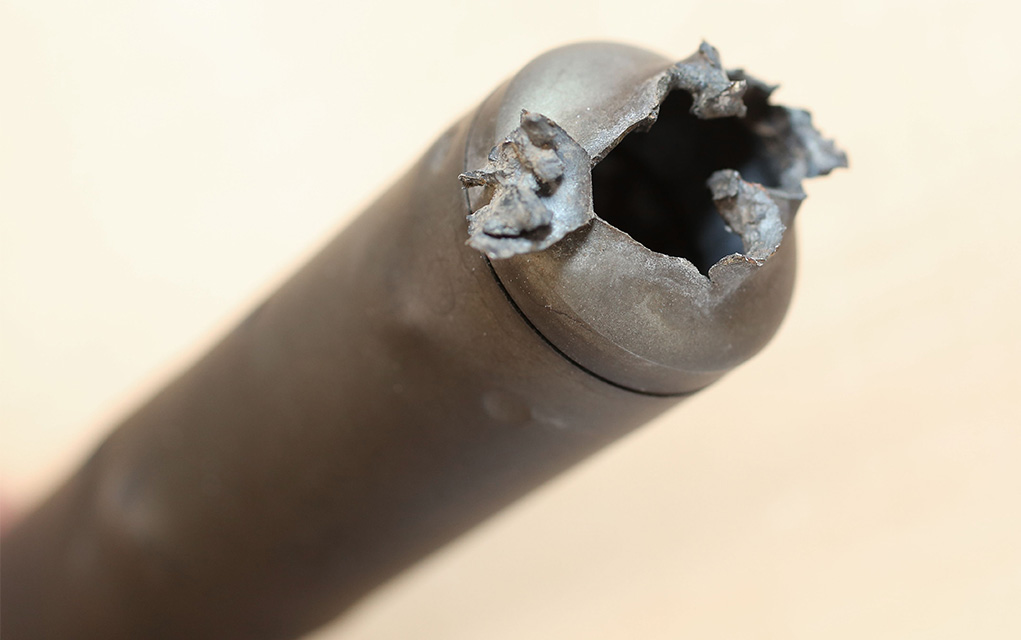

Scrub With Purpose
After a day of shooting, you’ll want to clean your suppressor. Well, some of them. Suppressors used in centerfire rifles with jacketed bullets don’t need cleaning. No, I’m not pulling your leg. If you’re using it properly, you get it hot enough to burn out anything that might try to remain and file for residency. Your pistol and rimfire ones will require cleaning, as in after each range session. Disassemble and use solvents (wear gloves) or throw the parts into your ultrasonic cleaner with the correct solvent.


I know shooters who spent their whole lives cleaning firearms by hand and after a couple of suppressor-cleaning sessions went out and bought an ultrasonic cleaner. It’s that bad an ordeal. And the gunk is that nasty, being a large percentage of lead.
Jumbled Decibels
There will never be an end to the argument of whose suppressor is quieter, and what your suppressor actually does. Let me let you in on a little secret: Everyone has it wrong, apart from a few OCD math nerds.
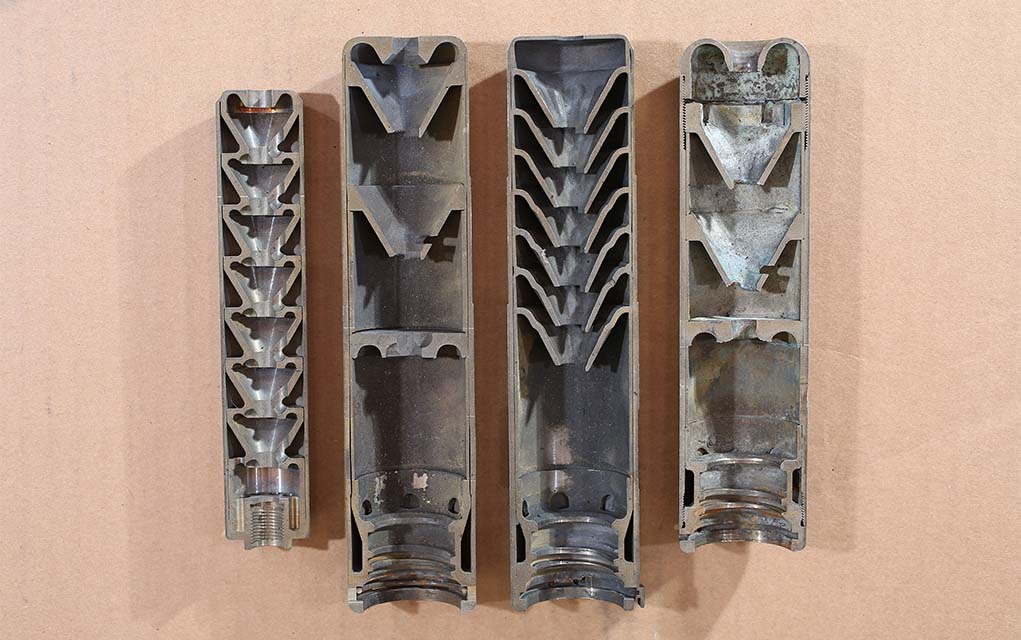

What do I mean? OK, let’s take an example. Someone will tell you, “The AR-15 muzzle blast is 165 dB.” Actually, no. The more detail-oriented will say, “Under standard conditions, an AR-15 with a 16-inch barrel, using M193 ammunition, will be 165 dB.” Close, but no cigar. The truly science based will add in the brand of rifle, the lot number of the ammunition and conclude with: “It will average 162 dB, plus-or-minus 4 dB, with a plus 2 dB first-round pop, and a confidence level of 90 percent.”
Yep, there’s no such thing as a single number for performance. So, your “noisy” suppressor is producing reports from 158 to 166 dBs, while your friend with the “quieter” suppressor is producing reports from 156 to 164 dB. Add in the human factor that even the best of us has a hard time telling noise levels apart that aren’t more than 3 dBs, and we come to the conclusion that they’re all pretty much the same. (Oh, I’m going to get hate letters for that.)


Is yours quieter than someone else’s? It might be the ammo. Change ammo and you can shift the average decibel level by 3 to 4 to 5 dB. Your “noisy” suppressor with the ammo it likes to be quiet with may well be quieter than your buddy’s “quiet” suppressor with noisy ammo. So, what can we conclude from this? Unless you bought an absolutely crap suppressor, you’ll be knocking a big chunk of noise off the muzzle report, getting better groups and having fun. Be happy.
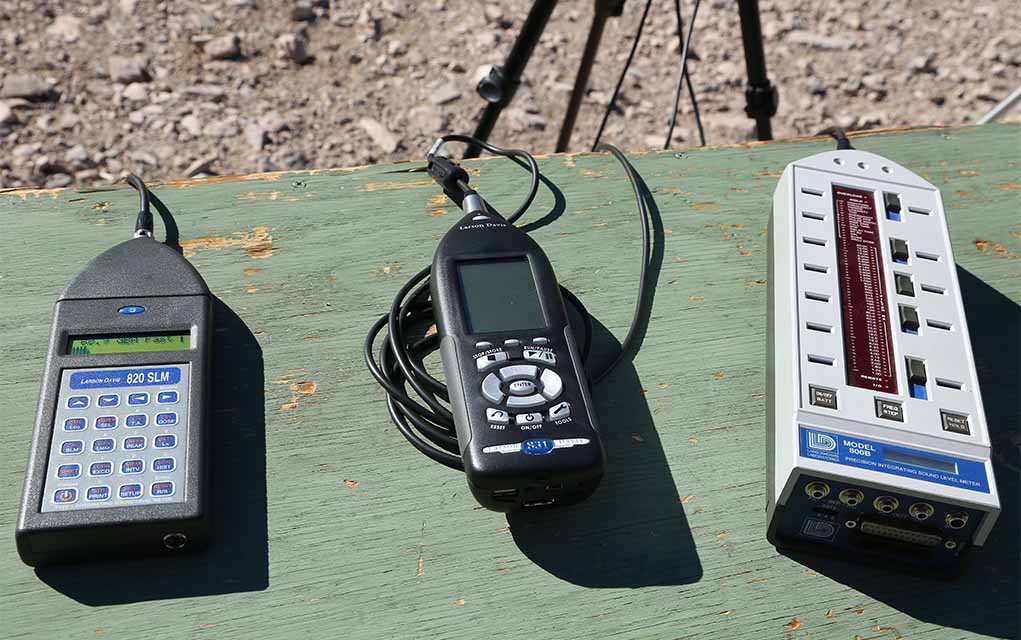

Oh, and your smartphone decibel app is absolute crap when it comes to measuring firearms. None of them work; they all fail, because the microphone built into your phone just isn’t built for the task. So, give it up.
For the Long Haul
Lastly, we have longevity … and that depends, in part, on you. If you clean your suppressor (when needed), don’t shoot frangibles through it, and don’t shoot unstable bullets (the classic being M855 through a 12-inch twist barrel), you’ll have a forever tool. Avoid baffle strikes and gunk, and you’ll have long-term fun time.
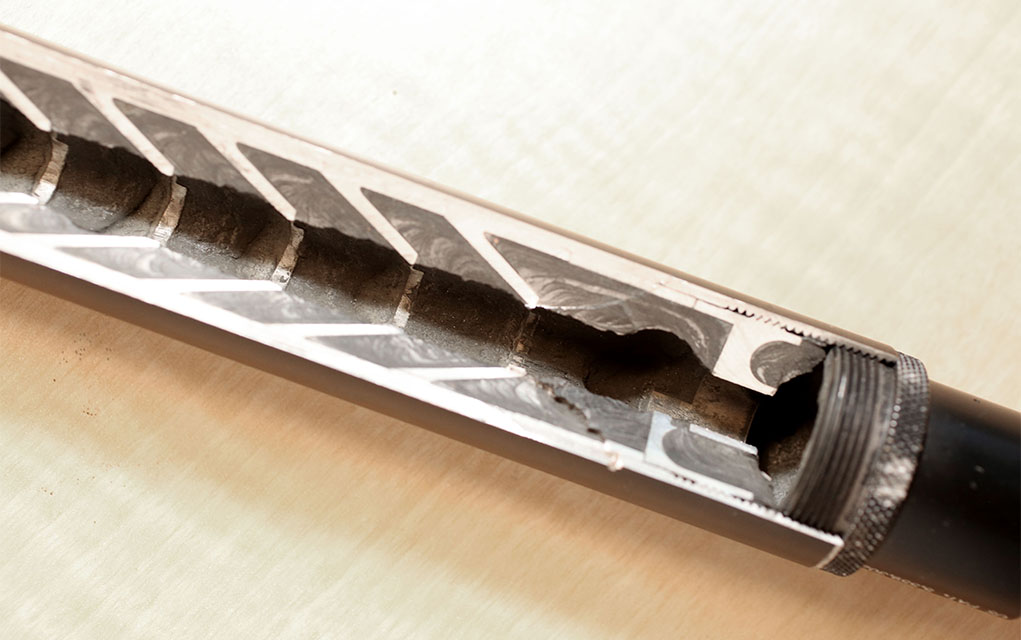

When I went through the LE class with Dr. Phil Dater (imagine this: a gun writer and photographer in a class filled with local and Federal LE, evidence examiners and prosecuting attorneys—no one wanted a group photo), he showed us a rifle suppressor that had been sectioned. He asked how many rounds it had seen. I had the highest round count guess and wasn’t even close. It had a documented 108,000 rounds through it, and it hardly showed wear.
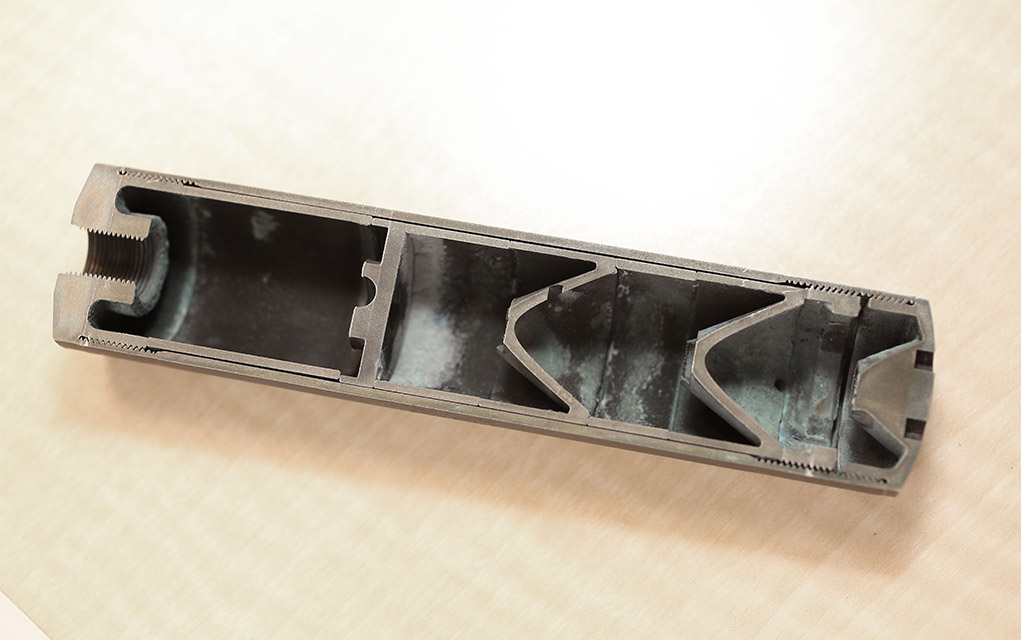

At current barrel-wear rates and ammo costs, 108K in an AR-15 amounts to eleven barrels ($279 each, Bravo Company) and ammo at $510 per thousand, for a total of $58,149. With that kind of longevity (with care), who cares if you spent a couple of hundred dollars more for your suppressor? Buy the best one for your needs.
What Do You Need?
And the sixth thing, needs? What do you need? If you’re hunting, you don’t need a full-auto-rated suppressor. C’mon, really? Less weight to pack, an less weight out on the muzzle will mean a more enjoyable hunting experience, and for that you want titanium. Yes, it costs more, but again, costs are relative.
You’ve plopped down, what, $5k for a hunt out West? A couple hundred more for the titanium version, and that’s a price that will be amortized over your hunting career. That extra cost is covered by not buying your special latte on the way to work each morning for a few months. No, really, a $7 drink five mornings a week for two months is $280. That just paid the upcharge for your all-titanium suppressor.
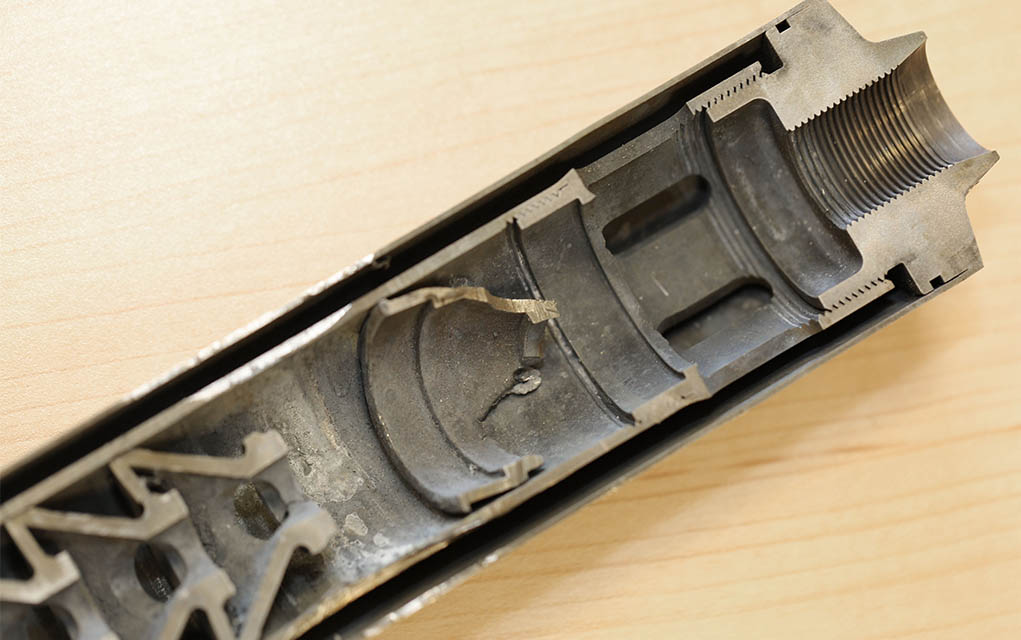

Oh, and those of you who must have the full-auto suppressor? Don’t complain about the weight—spend a little more time at the gym and you’ll be fine.
I learned a long time ago, street-racing cars, that speed costs. If you wanted to go fast you had to spend money (luckily, I didn’t have to actually foot the bill—long story, but basically Ford paid for it). If you want to go quiet, you have to spend money. How much is up to you.
Editor’s Note: This article originally appeared in the Suppressor Special 2024 issue of Gun Digest the Magazine.
More On Suppressors:


Next Step: Get your FREE Printable Target Pack
Enhance your shooting precision with our 62 MOA Targets, perfect for rifles and handguns. Crafted in collaboration with Storm Tactical for accuracy and versatility.
Subscribe to the Gun Digest email newsletter and get your downloadable target pack sent straight to your inbox. Stay updated with the latest firearms info in the industry.





